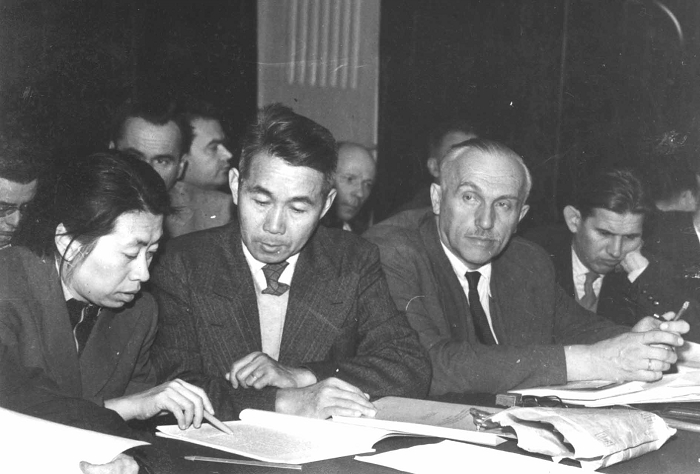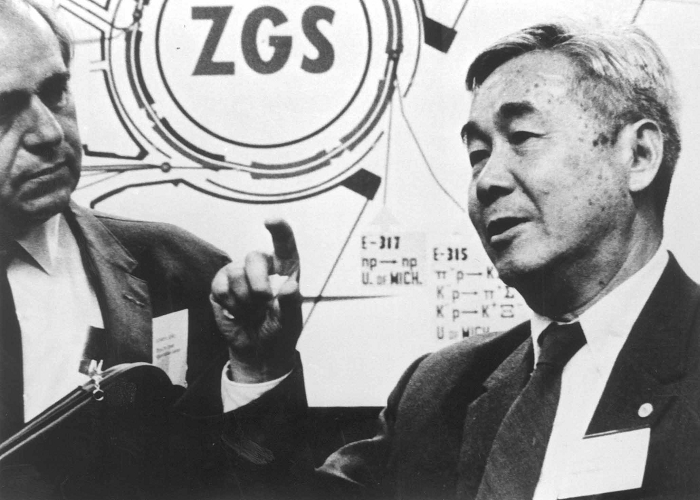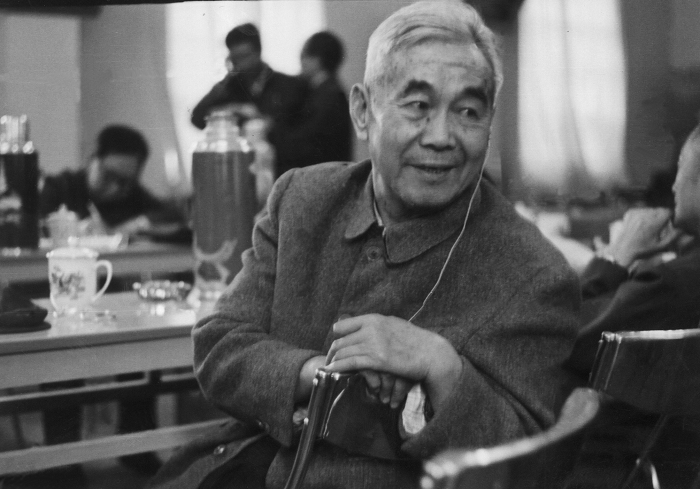Chang Wen-yu - Pioneer of China’s High Energy Physics
A grand symposium was held at the Institute of High Energy Physics (IHEP) to mark the centennial
anniversary of the birth of Prof. Chang Wen-yu, renowned physicist and member of the Chinese Academy of Sciences, and the first Director of the Institute of High Energy Physics.

Chang, working in in the Joint Institute for Nuclear Research (Dubna), the Soviet Union.In 1972
Chang Wen-yu,a native of Fujian Province, was born on January 9, 1910. After graduating from the Physics Department, Yenching University in 1931, he stayed to be a teacher. In 1935, he went abroad to study in Cavendish Laboratory, University of Cambridge. There he was tutored by Ernest Rutherford, the Nobel Prize Winner and gained his doctor’s degree in 1938.
During the Sino-Japanese War, with passion and patriotism, Chang Wen-yu returned to his motherland and taught in Sichuan University and the National Southwest Associated University. Due to extreme war conditions, he could not help but give up and went abroad once again in 1943. In the United States, he studied and taught in Princeton, he went to be a professor in Purdue from 1949 to 1956.
Breaking through difficulties, Prof. Chang Wen-yu returned to his long-parted motherland and was appointed as the Deputy Director of the Institute of Atomic Energy.
From 1959 to 1964, as the head of the Chinese group, Chang was sent to work in the Joint Institute for Nuclear Research (Dubna), the Soviet Union.

Chang, as the lead of the China's high energy physics delegation, visiting the United States in 1973
In 1972,a group of Chinese scientists with Chang as the lead, wrote to the late Premier Chou Enlai, suggesting that a particle physics accelerator be built in China. The late Premier responded shortly and in 1973, in accordance with the instructions of the late Premier, the Institute of High Energy Physics was founded and Chang was appointed as its first director.
In May 1973, Chang Wen-yu led a high energy physics delegation to the U.S., visiting Brookhaven National Laboratory, Fermilab, and the Stanford Linear Accelerator Center, and also CERN on their way back.
Upon their return, a 50-GeV proton synchrotron machine was recommended, and later on changed to an electron positron machine due to economic reasons. With the support of Mr. Deng Xiaoping, a 2.2 GeV electron positron collider called “the Beijing Electron Positron Collider” (BEPC) was formally approved in 1984.
Prof. Chang dedicated his whole life to the development of high energy physics in China. He was one of the founders in the research on radioactive isotope, air shower and exotic atoms, and was world-famous for his innovative contributions to the invention of multi-wire spark counter, as well as for his studies in confirming the existence of μ atoms.
He had together with Prof. Xiao Jian established the biggest cloud chamber research group and achieved good results. He emphasized and advocated to the combination of theory and experiment, through all these efforts, he had cultivated batches of young scientists, laying a sound foundation for the later development of high energy physics in China.

Chang, in a meeting of BEPC Project